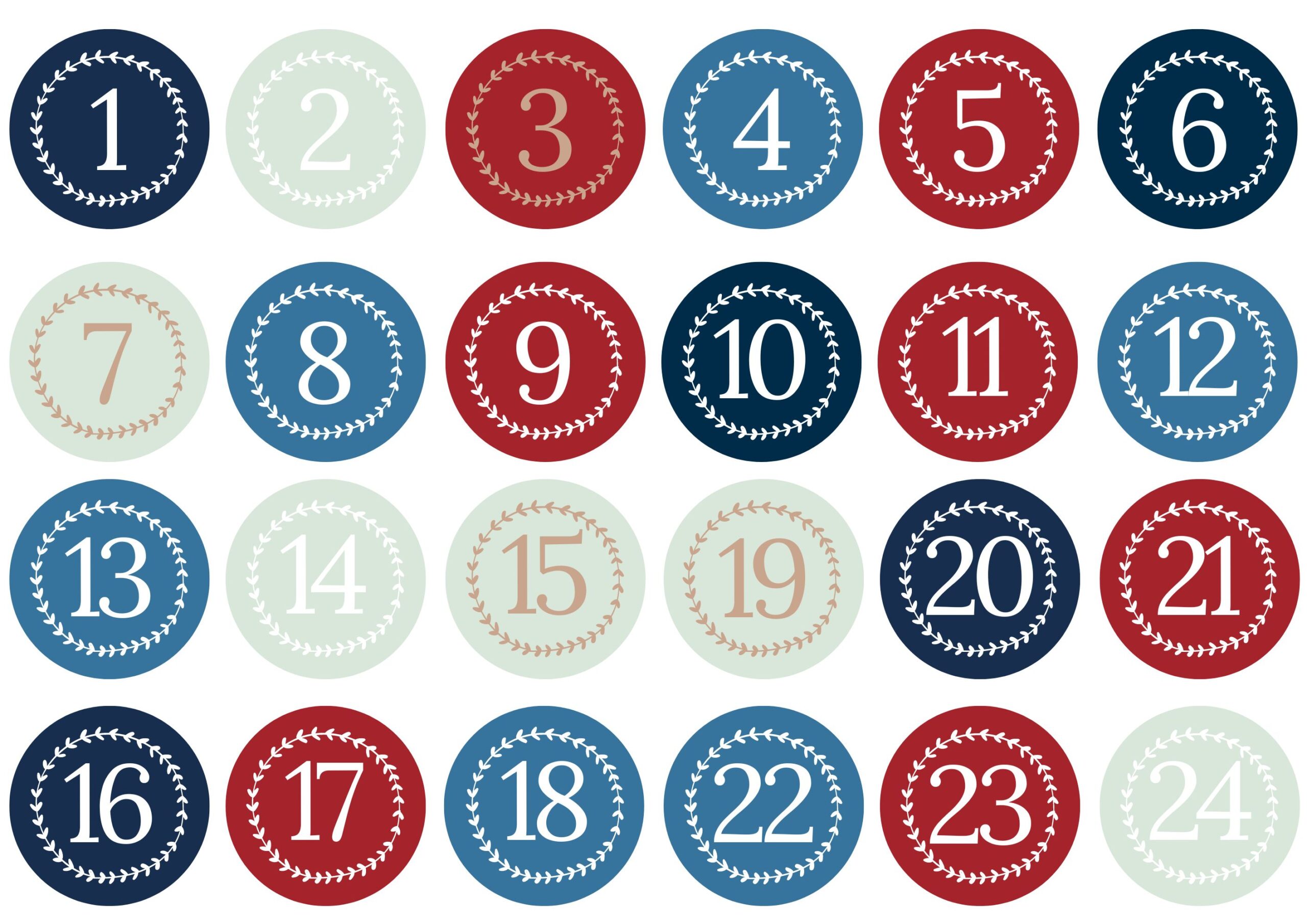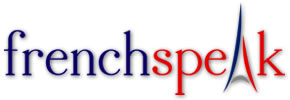Learning to count in the language of the country you’re visiting is a fundamental part of preparing for your trip in my mind.
Whether you’re buying a train ticket, asking for directions, or settling a bill at a café, knowing how to count in French will make every interaction much smoother and more enjoyable.
Here are a few reasons why I believe mastering French numbers is an essential skill for any traveller:
- Numbers are everywhere—from prices and dates to addresses and phone numbers. Being able to understand and use numbers in French helps you navigate these daily interactions with ease, whether you’re ordering in a restaurant or asking for directions at the market. So learn your numbers so you can communicate effectively.
- Knowing how to count in French will give you an immediate confidence boost when you need to communicate important information, like your hotel address or the time for your reservation. When you understand numbers, you can travel with less stress and more independence.
- Learning numbers shows respect for the local culture. Even a simple attempt to use French is often warmly received and appreciated especially in France. Many of my students share how their efforts to use even basic French – including numbers – transformed their travel experiences and led to deeper connections with locals.
- Numbers can be a critical part of ensuring you don’t get lost or confused, especially when navigating transport systems or following directions. Mastering how to count in French will definitely help avoid misunsderstandings. Knowing how to say prices, platform numbers or times in French can help you avoid tricky situations and make your travels smoother.
By learning to count in French, you’ll not only make practical day-to-day interactions easier but also enrich your overall experience, helping you feel more immersed in the language and culture. So, let’s get started and dive into the world of French numbers!
Part 1: Numbers 1 to 10 – The Foundation
Let’s start with the building blocks of French numbers, 1 un to 10 dix. These will come up everywhere—from café orders to counting change.
Un, deux, trois, quatre, cinq, six, sept, huit, neuf, dix
(One, two, three, four, five, six, seven, eight, nine, ten).
A helping hand – and word of warning – for when these numbers are in sentences:
- Un: Sounds like “uh” with a nasal tone at the end.
- Deux: The ending eux is soft, like “duh” but prettier.
- Trois: Roll that “r” and finish with a crisp “ah.”
Part 2: Numbers 11 to 19 – Taking the Next Step
Now that you’ve graduated from 1 to 10, let’s move up to 20. Things start to get interesting, but ne vous inquiétez pas (don’t worry), it’s will all soon make sense.
In English, the ending -teen is reflected in the French ending -ze so make sure you make that buzzing ‘zzz’ sound: Onze, douze, treize, quatorze, quinze, seize, dix-sept, dix-huit, dix-neuf (Eleven, twelve, thirteen, fourteen, fifteen, sixteen, seventeen, eighteen, nineteen)
Listen to the video for the right pronunciation:
Common mistake alert:
Learners often mix up quatre (four) and quatorze (fourteen). Keep the “zz” sound in mind for quatorze. Notice how from dix-sept to dix-neuf (seventeen to nineteen), it’s like someone got bored when they reached 17 to 19: “ten-seven” for dix-sept and “ten-eight” for dix-huit and finally “ten-nine” for dix-neuf.
C’est malin (it’s clever), right?
Part 3: Numbers 20 to 69 – Building Patterns
Here’s where we get into some patterns. Numbers like 21, 31, and 41 introduce the charming “et un” (and one), while the rest follow a steady rhythm. Firstly let’s look at the tens:
- 20 vingt
- 30 trente
- 40 quarante
- 50 cinquante
- 60 soixante
Now the numbers in between:
- For numbers ending in one, add “et un”: vingt et un (twenty-one), trente et un (thirty-one). Only apply for 21, 31, 41, 51 and 61.
- For other numbers like 22 vingt-deux and 43 quarante-trois are more intuitive once you know the base.
Practical Examples:
- J’ai vingt et un euros. (I have twenty-one euros).
- Mon numéro de téléphone est le zéro six, trente et un, quarante-cinq, cinquante. (My phone number is 06 31 45 50).
- L’adresse est le quarante-deux, rue du Moulin. (The address is forty-two, Mill Street).
- Le repas coûte cinquante euros. (The meal costs fifty euros).
- Je prends soixante tickets pour l’événement. (I’m taking sixty tickets for the event).
- Trente personnes sont invitées à la fête. (Thirty people are invited to the party).
- Le film dure soixante-deux minutes. (The movie lasts sixty-two minutes).
Part 4: French Phone Numbers – Cultural Note
French phone numbers are typically grouped in pairs. This is a little different for English speakers, but it’s easy to adapt.
French phone numbers can sound a bit sing-songy when grouped in pairs. In Australia – where I live now – phone numbers have 10 digits. So if your number is 0623456817, it will often be presented like this in writing:
- If it’s a landline: 06 2345 6817 (area code then 4 digits then 4 digits)
- If it’s a mobile: 0623 456 817 (4 digits then 3 then another 3)
When read out loud, each digit is said by itself: 0-6-2-3-4-5-6-8-1-7 and a slight pause happens around the groups. In France , on the other hand, we’ll say and write it in pairs:
- Mon numéro est le zéro six, vingt-trois, quarante-cinq, soixante-huit, dix-sept. (My mobile number is 06-23-45-68-17).
Read and Listen to these Examples:
- Mon numéro est le zéro six, vingt-trois, quarante-cinq, soixante-huit, dix-sept. (My mobile number is 06 23 45 68 17).
- Le numéro de la boulangerie est le zéro un, trente-neuf, cinquante-trois, soixante-dix, vingt-huit. (The bakery’s number is 01 39 53 70 28).
- Je te donne le numéro de taxi “zéro six, quarante-sept, vingt-neuf, quarante-cinq, trente-six”. (Here’s the taxi number: 06 47 29 45 36).
- Appelle-moi au bureau : zéro quatre, cinquante-trois, vingt-quatre, soixante-seize, dix-neuf. (Call me at the office: 04 53 24 76 19).
- Le numéro de la pizzéria est écrit ici: zéro un, quarante-cinq, trente-trois, vingt-huit, soixante-huit. (The pizzeria’s number is written here: 01 45 33 28 68).
- Mon numéro de fixe à la maison est le zéro deux, trente et un, quarante-quatre, cinquante-huit, dix. (My home number is 02 31 44 58 10).
- Le service client est le zéro huit, vingt-deux, quarante et un, cinquante-neuf, treize (The customer service number is 08 22 41 59 13).
LISTEN HERE:
Part 5: Numbers 70 to 99 – Cracking the Code
Numbers between soixante-dix (seventy) and quatre-vingt-dix-neuf (ninety-nine) can be tricky. Oh oui… here’s where French numbers get playful!
From 70 onward, we have a quirky mix of addition and multiplication but fear not, I’ll break it down simply. Let’s start with the main ones:
- 70 – Soixante-dix (seventy) is literally “sixty-ten” like ‘60 10’
- 80 – Quatre-vingts (eighty) means “four-twenties” but if you overthink the maths, you’ll soon say it wrong and say ‘forty (times) two’. My best tip is to say the number ‘quatre-vingts’ over and over again until it merges into one homogeneous sound.
- 90 – Quatre-vingt-dix (ninety) think of it as “four-twenties-ten.”
If you’re thinking, “Why did I ever choose French to learn?” you’re not alone. The French system gets more creative as you count higher, and this is I love that les Belges et les Suisses (Belgians and Swiss people) simplify things: In Belgium and Switzerland, they have a more straightforward way of counting numbers like 70, 80, and 90, avoiding the “sixty-ten” and “four-twenties” systems used in France.
- 70 Septante: In Belgium and Switzerland, septante is used for seventy instead of soixante-dix.
- 80 Huitante (Switzerland) or Octante (rare, Switzerland only): For eighty, some regions of Switzerland use huitante, though quatre-vingts is still common. In Belgium, quatre-vingts is generally used, the same as in France.
- 90 Nonante: For ninety, nonante is used instead of quatre-vingt-dix in both Belgium and Switzerland, making it much more intuitive.
If you ask me, honestly they got it right and I often tell my learners we should start a petition to change these numbers over in France! Hehehe… So how do we count in French between 70 and 99? Well, we use numbers 1 (un) to 9 (neuf) to:
- count from 0 to 9
- count from 21 to 29
- count from 31 to 39
- count from 41 to 49
- count from 51 to 59
- count from 81 to 89
For the second pattern, we need to re-use the numbers from Part 2 (this is your gentle reminder to learn these really well!). We will use numbers 11 (onze) to 19 (dix-neuf) again to:
- count from 71 to 79
- count from 91 to 99
So, instead of saying soixante-dix-neuf (literally “sixty-nineteen”) for 79 like in France, someone in Belgium or Switzerland would simply say septante-neuf. Similarly, quatre-vingt-dix-neuf (ninety-nine) in France becomes nonante-neuf in Belgium and Switzerland.
Time for some Practical Examples:
- Le billet coûte soixante-douze euros (The ticket costs seventy two euros).
- En Belgique, on dit septante pour la somme de soixante plus dix (In Belgium, we say septante for the sum of sixty plus ten).
- Le sac coûte quatre-vingts trois euros (The bag costs eighty three euros).
- Ce film dure quatre-vingt-dix minutes (This movie lasts ninety).
- Le billet de train coûte cent soixante-dix-neuf euros (The train ticket costs one hundred and seventy-nine euros).
Part 6: Counting in French to 100 – A Recap
Now let’s recap the numbers from 1 to 100:
0 – Zéro
déchet zéro (zero waste)
1 – Un un escargot (a snail),
une cuisse de grenouille (a frog’s leg)
2 – Deux
deux fromages célèbres: Brie et Roquefort (two famous cheeses: Brie and Roquefort)
3 – Trois
trois couleurs du drapeau français (three colours of the French flag)
4 – Quatre
les quatre saisons de Vivaldi à l’Opéra de Paris (the four seasons of Vivaldi at the Paris Opera)
5 – Cinq
les cinq sens dans la gastronomie française (the five senses in French gastronomy)
6 – Six
six types de pain en boulangerie (six types of bread at the bakery)
7 – Sept
sept jours de la semaine, marchés ouverts partout (seven days of the week, markets open everywhere)
8 – Huit
huit arrondissements de Lyon (eight districts of Lyon)
9 – Neuf
es neuf muses des arts classiques, au Louvre (nine muses of classical arts, at the Louvre)
10 – Dix
les dix provinces historiques de France (the ten historical provinces of France)
11 – Onze
onze joueurs dans une équipe de football (eleven players in a football team)
12 – Douze
douze mois de l’année à fêter les traditions françaises (twelve months of the year celebrating French traditions)
13 – Treize
treize desserts de Noël en Provence (thirteen Christmas desserts in Provence)
14 – Quatorze
le quatorze juillet, la fête nationale (the 14th of July, National Day)
15 – Quinze
quinze étapes de la Route des Vins d’Alsace (fifteen stops on the Alsace Wine Route)
16 – Seize
seize arrondissements de Paris avant 1860 (sixteen districts of Paris before 1860)
17 – Dix-sept
es dix-sept glaciers des Alpes françaises (seventeen glaciers in the French Alps)
18 – Dix-huit
le dix-huitième siècle des Lumières (the eighteenth century of the Enlightenment)
19 – Dix-neuf
les dix-neuf arcs du Pont du Gard (nineteen arches of the Pont du Gard)
20 – Vingt
vingt régions viticoles célèbres (twenty famous wine regions)
21 – Vingt et un
vingt et une arènes gallo-romaines à Arles (twenty-one Gallo-Roman arenas in Arles)
22 – Vingt-deux
vingt-deux régions françaises avant 2016 (twenty-two regions of France before 2016)
23 – Vingt-trois
vingt-trois espèces d’orchidées sauvages dans le parc national des Cévennes (twenty-three species of wild orchids in the Cévennes National Park)
24 – Vingt-quatre
vingt-quatre heures du Mans (twenty-four hours of Le Mans race)

25 – Vingt-cinq
vingt-cinq variétés de pommes de terre en France (twenty-five varieties of potatoes in France)
26 – Vingt-six
vingt-six lettres dans l’alphabet français (twenty-six letters in the French alphabet)
30 – Trente
trente kilomètres du sentier côtier en Bretagne (thirty kilometres of coastal path in Brittany)
33 – Trente-trois
trente-trois régions productrices de vin en France (thirty-three wine-producing regions in France)
34 – Trente-quatre
trente-quatre jours d’été ensoleillés en Provence (thirty-four sunny summer days in Provence)
35 – Trente-cinq
trente-cinq heures par semaine, la durée légale du travail en France (thirty-five hours per week, the legal work duration in France)
40 – Quarante
quarante sortes de parfums de glace chez Berthillon à Paris (forty flavours of ice cream at Berthillon in Paris)
41 – Quarante et un
quarante et un châteaux de la Renaissance en France (forty-one Renaissance castles in France)
42 – Quarante-deux
quarante-deux tours à la Défense (forty-two towers in La Défense)
43 – Quarante-trois
quarante-trois milles de plages sur la Côte d’Azur (forty-three miles of beaches on the French Riviera)
44 – Quarante-quatre
quarante-quatre espèces d’oiseaux migrateurs en Camargue (forty-four species of migratory birds in the Camargue)
50 – Cinquante
cinquante châteaux dans la vallée de la Loire (fifty castles in the Loire Valley)
55 – Cinquante-cinq
cinquante-cinq musées en région Île-de-France (fifty-five museums in the Île-de-France region)
56 – Cinquante-six
cinquante-six kilomètres de plages sur l’île de Ré (fifty-six kilometres of beaches on the Île de Ré)
57 – Cinquante-sept
cinquante-sept sortes de fleurs au marché aux fleurs de Nice (fifty-seven kinds of flowers at the flower market in Nice)
58 – Cinquante-huit
cinquante-huit monuments dans le centre de Paris (fifty-eight monuments in central Paris)
60 – Soixante
soixante millions de touristes chaque année en France (sixty million tourists every year in France)
68 – Soixante-huit
soixante-huit vins AOC (Appellation d’Origine Contrôlée) (sixty-eight AOC wines)
69 – Soixante-neuf
soixante-neuf départements de la France en 1960 (sixty-nine departments of France in 1960)
70 – Soixante-dix
soixante-dix espèces de poissons en Méditerranée (seventy species of fish in the Mediterranean)
71 – Soixante et onze
soixante et onze musées nationaux en France (seventy-one national museums in France)
75 – Soixante-quinze
soixante-quinze pour cent des Français vivent en ville (seventy-five percent of French people live in cities)
80 – Quatre-vingts
quatre-vingts millions de baguettes vendues chaque jour (eighty million baguettes sold each day)
87 – Quatre-vingt-sept
quatre-vingt-sept millions de visiteurs au Mont Saint-Michel (eighty-seven million visitors to Mont Saint-Michel)
88 – Quatre-vingt-huit
quatre-vingt-huit musées en région Provence-Alpes-Côte d’Azur (eighty-eight museums in the Provence-Alpes-Côte d’Azur region)
90 – Quatre-vingt-dix
quatre-vingt-dix minutes dans un match de football (ninety minutes in a football match)
91 – Quatre-vingt-onze
quatre-vingt-onze ans de la Tour Eiffel en 1980 (ninety-one years of the Eiffel Tower in 1980)
99 – Quatre-vingt-dix-neuf
quatre-vingt-dix-neuf variétés de fromage à déguster (ninety-nine varieties of cheese to taste)
100 – Cent
cent ans de la première guerre mondiale (one hundred years since World War I)
Part 7: Beyond 100 and Big Numbers
Now you’re into the big leagues with cent (100) and mille (1,000). Whether it’s discussing price, dates s or giving an address, these numbers are key. It will also help if you’re discussing the price of that fancy sac à main (handbag) you’ve been eyeing off.
- Cent (100) – One hundred
- Deux cents (200) – Two hundred
- Cinq cents (500) – Five hundred
- Mille (1,000) – One thousand
- Deux mille (2,000) – Two thousand
- Dix mille (10,000) – Ten thousand
- Cent mille (100,000) – One hundred thousand
- Un million (1,000,000) – One million
- Deux millions (2,000,000) – Two million
- Dix millions (10,000,000) – Ten million
- Cent millions (100,000,000) – One hundred million
- Un milliard (1,000,000,000) – One billion
- Deux milliards (2,000,000,000) – Two billion
- Dix milliards (10,000,000,000) – Ten billion
- Cent milliards (100,000,000,000) – One hundred billion
- Un billion (1,000,000,000,000) – One trillion
Want to listen to the pronunciation of these big numbers, click below:
More French Numbers Examples:
- Cette valise Hermès coûte vingt-cinq mille euros (This Hermès suitcase costs 25,000 euros).
- Son sac Chanel est à quatorze mille cinq cents euros (Her Chanel handbag is priced at 14,500 euros).
- Je vois que la montre Rolex coûte cinquante mille euros (I see that the Rolex watch costs 50,000 euros).
- Sa voiture de sport Ferrari coûte plus de trois cent mille euros (His Ferrari sports car costs more than 300,000 euros).
- Le collier en diamants vaut cinq cent mille euros (The diamond necklace is worth 500,000 euros)
- L’entreprise emploie Presque mille personnes (The company employs nearly one thousand people).
- Ils ont dépensé cent cinquante mille euros pour la rénovation de leur ferme (They spent 150,000 euros on their farm renovation).
Part 8: Tiny French Numbers – Fractions and Decimals
French numbers also include fractions and decimals, which you’ll often come across when dealing with prices and measurements, especially when shopping or discussing discounts:
- Une moitié (a half)
- Trois quarts (three quarters)
- Trois virgule cinq (3.5)
- Moins cinq pour cent (-5%)
- Vingt pour cent en soldes (20% on sale)
More Practical Examples:
- Ce livre est à moitié prix. (This book is half-price).
- Un tiers des invités est arrivé. (One-third of the guests have arrived).
- Je voudrais un demi-litre de vin. (I would like half a litre of wine).
- Le produit est en solde à cinquante pour cent. (The product is on sale at 50% off).
- Je vais payer un virgule cinq euros. (I will pay 1.5 euros).
- Trois quarts des personnes étaient saouls. (Three-quarters of the people were drunk).
- Le taux d’intérêt est de deux virgule cinq pour cent. (The interest rate is 2.5%).
Part 9: Common Mistakes and Pronunciation Tips
French numbers can be tricky, but here are some common mistakes and pronunciation tips:
- Un: Nasal sounds can be tricky, so practice using “uh” while slightly closing your nasal passage.
- Deux and trois: Avoid hard sounds—let these words flow gently.
- Don’t forget liaisons between numbers and words starting with vowels. For example, un is pronounced un-neuro when followed by “euro.”
You can learn The Art of Counting in French for free with my mini course:
Part 10: Number Listening Tips
French numbers can be tricky to understand when spoken so I made this practice video for you.
French Numbers Practice Time :
Now, it’s time to test your French numbers knowledge!
Activity 1
Here are questions to help you practice:
- How do you say 76 in French if you’re from France? And if you’re from Belgium or Switzerland?
- What’s the French for 888?
- Translate: “The house costs 1,300 euros.”
- How do you say ‘15% off’?
- What’s 58.5 in French?
- Say this in French: “My phone number is 06 23 48 79 10.”
- How do you say “three quarters” in French?
When you’ve had a try, click below to listen to the seven answers:
Voilà! Learning to count in French is a crucial stepping stone toward feeling more confident in everyday conversations.
Whether you’re ordering at a café, booking tickets, or navigating a new city, numbers are everywhere.
By understanding the unique French system and familiarising yourself with regional differences in Belgium and Switzerland, you’ll be able to navigate these situations with ease. With a bit of practice, even the most challenging numbers will feel second nature.
Ready to take your French skills to the next level? Our GET STARTED IN FRENCH course is the perfect way to build a strong foundation. In just six modules, you’ll master essential vocabulary, common phrases, and grammar basics that will have you speaking French from day one.
Join today and start your journey to becoming a confident French speaker!
C’est le moment parfait (It’s the perfect moment) to dive into French.
On vous attend! (We’re waiting for you!)







